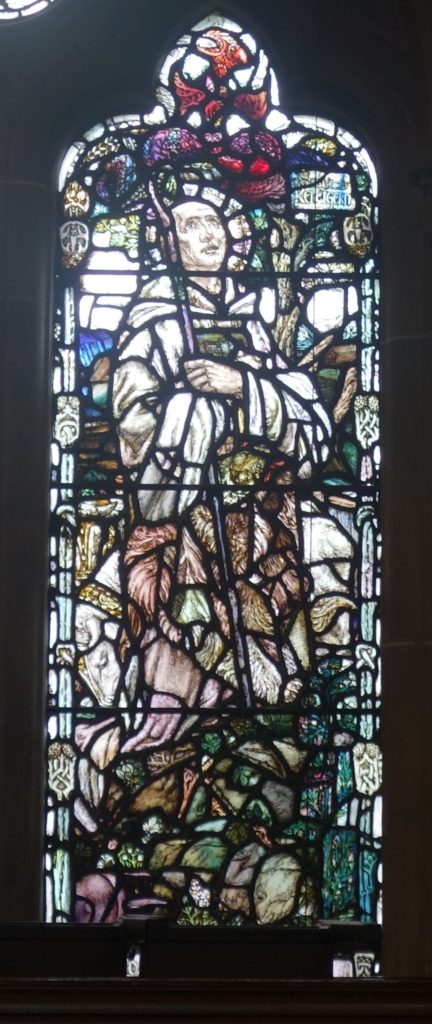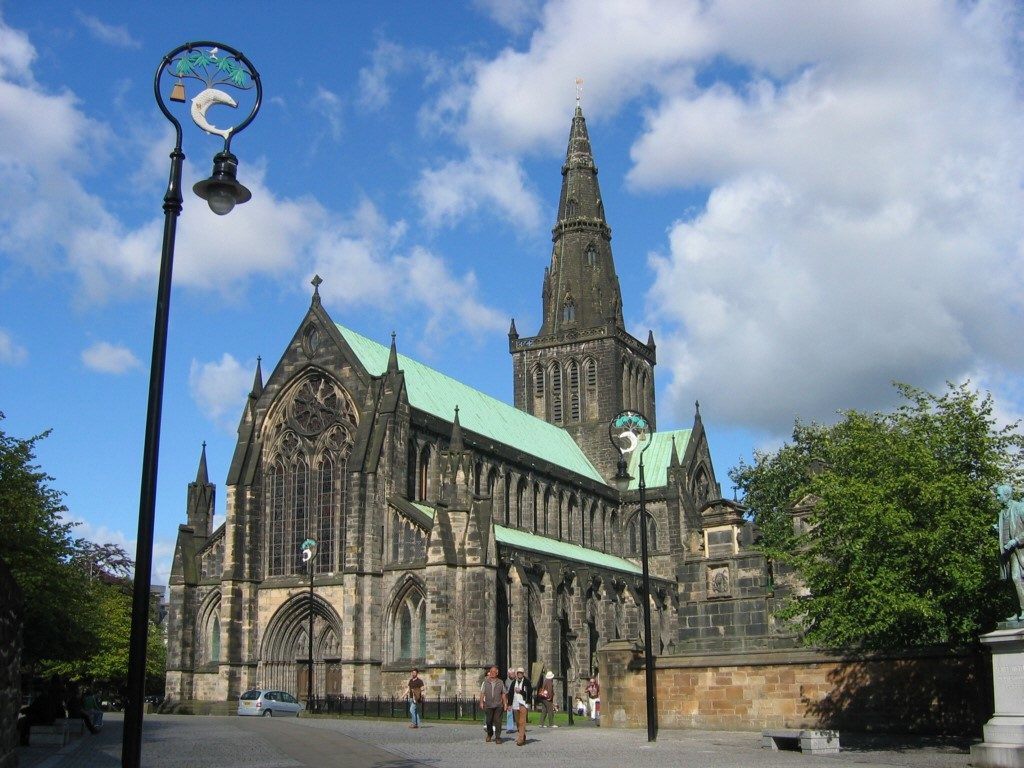On the 30th of April 2019 the Centre was delighted to welcome Professor Barry Lewis from the Dublin Institute of Advanced Studies, who spoke about the negotiation of Britishness in Jocelin’s Life of St. Kentigern (aptly, the patron saint of Glasgow). Prior to his time at DIAS, Professor Lewis worked at the Centre for Advanced Welsh and Celtic Studies in Aberystwyth, on projects including: Cyfres Beirdd yr Uchelwyr (the Poets of the Nobility Series), Barddoniaeth Guto’r Glyn (The Poetry of Guto’r Glyn), and Cwlt y Seintiau (The Cult of Saints in Wales. Professor Lewis’ research interests include: medieval Welsh and Irish language and literature; medieval textuality and concepts of literature; hagiography and saints’ cults.

Jocelin’s Life of St Kentigern dates to the twelfth century and is typical of medieval hagiographies in that is was written some six centuries after the lifetime of the saint. Kentigern himself was a Briton, however by the twelfth century there were no remaining unproblematic British spaces (the term British is used here and throughout in the Brythonic sense of the word). Professor Lewis posed the question of whether it is reasonable to think of the Britons as a singular distinct ethnographic group in the twelfth century – by this time the Britons were geographically fragmented; there had been for some time increasing tensions in the historiographical records (such as Gildas’ portrayal of the history of the Britons as a series of disasters for which the Britons themselves were to blame as they consistently provoked God; or, Geoffrey of Monmouth’s assertion that the Welsh should no longer call themselves British as only the Breton people remained noble enough to be worthy of this title). Professor Lewis noted that there would not have remained a strong British identity in Glasgow by the twelfth-century, and so in writing the Life of St Kentigern, Jocelin would have been dealing with a society that was deeply unfamiliar to him and, moreover, one which was already dead or dying.
At the same time as the Life was written, the bishop of Glasgow (also named Jocelin) was making the case for the see of Glasgow to become special daughter of the Roman Patriarchate, answering directly to the Pope rather than to the Archbishop of Canterbury or of York. The motive for Jocelin writing the Life of St Kentigern was, then, to highlight that Glasgow was distinct, ethnically different from other parts of Britain. These factors meant that Jocelin was compelled to navigate both the problems of the Britishness of St Kentigern, and the history of Christianity in Britain. The focus of Professor Lewis’ talk was to discuss some of these problems and the ways in which Jocelin solves them in the Life.

Stained glass window depicting St. Kentigern in the Bute Hall (www.wikipedia.org)
Jocelin portrays Kentigern as a missionary and apostle of Glasgow and the surrounding region of Cambria. Professor Lewis noted that one of the difficulties in doing this was that by Jocelin’s time, the Legend of Lucius about the conversion of Britain was extremely well-known, and therefore it would not be possible for St Kentigern to be credited with the same kind of conversion in Cambria as St Patrick in Ireland. In order to overcome this problem, Jocelin makes intelligent use of the written records to clear space in the history of the British Church for St Kentigern – Professor Lewis noted that there are parallels here with Welsh hagiographies, however it is uncertain whether Jocelin had access to these or whether he arrived at the same solution as the Welsh hagiographers when faced with the same problem. Certainly, St David provided a useful precedent for Jocelin, as his cult was already legitimised it in the English Church and he had escaped many of the same problems of Britishness. In the Life of St Kentigern, Jocelin streamlines the narrative and forms a more distinct peak and trough movement of British conversion history – by doing so, Jocelin clears a space in British church history for Kentigern to return triumphant to Glasgow from his exile in Wales, and then to convert the neighbouring regions of Cambria (which, from the sources, Jocelin knew to be safely pagan during St Kentigern’s time). Professor Lewis argued that the Gildasian framework, which is echoed in Bede, allowed Jocelin to do this. It is clear that Jocelin is aware that he is altering history as reported in the sources – and is uncomfortable in doing so. Despite his best efforts, Jocelin could not make Cambria nor the rest of Scotland entirely pagan; and further problems remained in that it was well-known that St Kentigern was born to a Christian mother and that he was raised in Fife by St Serf, who was at that time ministering to the Picts. Further, there is the problem of the strange situation in which Ninian founds the cemetery at Glasgow, but that it remains empty until Kentigern’s time. Towards the end of the Life, Jocelin turns towards seeing Kentigern as a second Augustine as he ranges all over the north on conversion missions.

Professor Lewis concluded the talk by highlighting the remarkable way in which, instead of remaining silent about problems, Jocelin tackles them head on and tries to solve them. He asserted that to be a British Christian in the twelfth century is to be a problematic Christian. However, Professor Lewis argued that through employing a creative ambiguity about Christianity in Cambria and in Britain, Jocelin was able to elevate a local Glasgow saint to something like St Patrick, something like St David, and most of all like an Augustine for the Kingdom of the Scots.
Myra Booth-Cockcroft


This is really attention-grabbing, You are an excessively professional blogger.
I’ve joined your feed and stay up for in the hunt for extra of your great post.
Also, I’ve shared your web site in my social networks